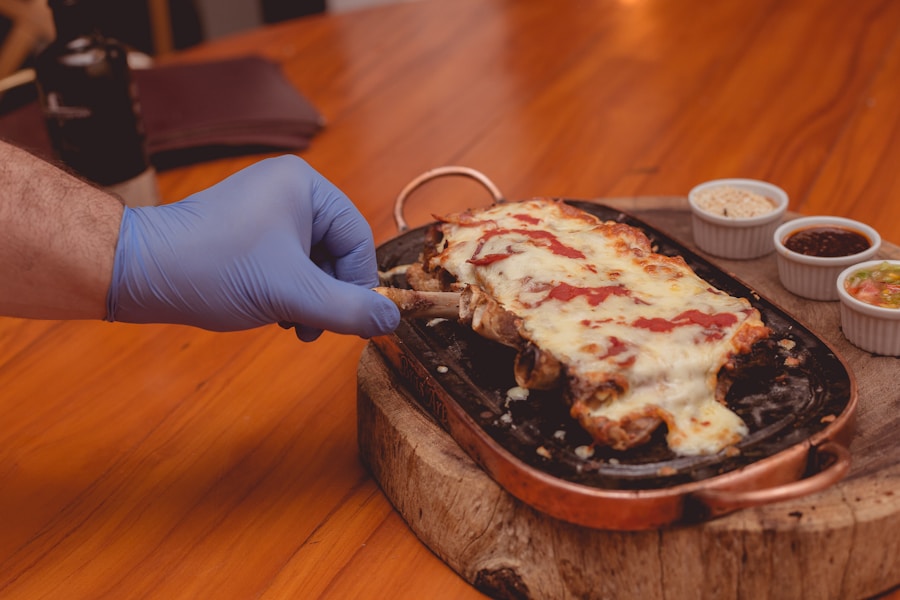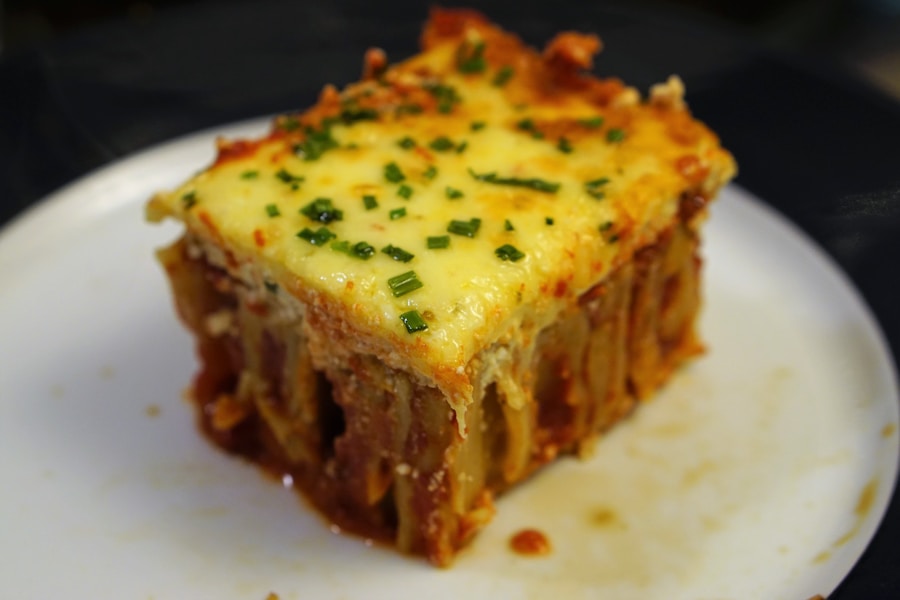Classic lasagna is a beloved dish that has transcended borders and generations, becoming a staple in Italian cuisine and a favorite in households around the world. This hearty, layered pasta dish is characterized by its rich combination of flavors and textures, featuring sheets of pasta interspersed with savory meat sauce, creamy béchamel or ricotta, and a generous topping of melted cheese. The origins of lasagna can be traced back to ancient times, but it has evolved significantly over the centuries, leading to the diverse interpretations we see today.
The beauty of classic lasagna lies not only in its taste but also in its versatility. It can be prepared for a casual family dinner or an elegant gathering, making it suitable for various occasions. The process of assembling lasagna is as much an art as it is a science, requiring attention to detail and a passion for cooking.
As we delve into the ingredients, preparation methods, and variations of this iconic dish, we will uncover the secrets that make classic lasagna a timeless favorite.
Key Takeaways
- Classic lasagna is a popular Italian dish made with layers of pasta, meat sauce, and cheese, baked to perfection.
- The key ingredients for classic lasagna include lasagna noodles, ground beef or Italian sausage, marinara sauce, ricotta cheese, mozzarella cheese, and Parmesan cheese.
- To make classic lasagna, start by layering the meat sauce, noodles, and cheese in a baking dish, then bake until bubbly and golden brown.
- Tips for making the perfect classic lasagna include using high-quality ingredients, properly seasoning the meat sauce, and allowing the lasagna to rest before serving.
- Variations of classic lasagna include vegetarian lasagna, seafood lasagna, and white lasagna with béchamel sauce.
Ingredients for Classic Lasagna
To create an authentic classic lasagna, one must gather a selection of high-quality ingredients that contribute to its rich flavor profile. The foundation of any lasagna is the pasta itself. Traditionally, lasagna noodles are wide, flat sheets made from durum wheat semolina.
While fresh pasta can elevate the dish, dried lasagna noodles are widely used for their convenience and ability to hold up well during baking. The meat sauce is another crucial component of classic lasagna. Ground beef or a combination of beef and pork is commonly used, sautéed with onions, garlic, and herbs such as oregano and basil to create a robust flavor.
Tomatoes play a vital role in this sauce; whether using canned crushed tomatoes or fresh ones, they provide acidity and sweetness that balance the richness of the meat. Additionally, a splash of red wine can enhance the depth of flavor. Cheese is perhaps the most indulgent aspect of lasagna.
A blend of ricotta cheese, mozzarella, and Parmesan creates a creamy and gooey texture that complements the other layers beautifully. Ricotta adds a lightness to the dish, while mozzarella provides that quintessential stretchiness when melted. Parmesan, with its sharpness, rounds out the flavor profile and adds a delightful crust when baked.
Finally, seasonings such as salt, pepper, and fresh herbs are essential for bringing all these elements together harmoniously.
Step-by-Step Instructions for Making Classic Lasagna

Making classic lasagna involves several steps that require patience and attention to detail. The first step is preparing the meat sauce. Begin by heating olive oil in a large skillet over medium heat.
Add finely chopped onions and minced garlic, sautéing until they become translucent and fragrant. Next, incorporate the ground meat into the skillet, breaking it apart with a wooden spoon as it cooks. Once browned, drain any excess fat before adding crushed tomatoes, tomato paste, and red wine.
Season with salt, pepper, oregano, and basil, allowing the sauce to simmer for at least 30 minutes to develop its flavors. While the sauce simmers, prepare the cheese mixture. In a mixing bowl, combine ricotta cheese with an egg (to help bind the mixture), grated Parmesan cheese, salt, and pepper.
This mixture will add creaminess to the layers of lasagna. Once the meat sauce is ready and the cheese mixture is prepared, it’s time to assemble the lasagna. Preheat your oven to 375°F (190°C).
In a baking dish, spread a thin layer of meat sauce on the bottom to prevent sticking. Layer three sheets of lasagna noodles over the sauce, followed by half of the ricotta mixture, a layer of mozzarella cheese, and another layer of meat sauce. Repeat this process until all ingredients are used, finishing with a layer of noodles topped with meat sauce and a generous amount of mozzarella and Parmesan cheese.
After assembling the lasagna, cover it with aluminum foil to prevent excessive browning during baking. Place it in the preheated oven for about 25 minutes. After this time, remove the foil and continue baking for an additional 15-20 minutes until the cheese is bubbly and golden brown.
Once out of the oven, allow the lasagna to rest for at least 15 minutes before slicing. This resting period helps the layers set and makes serving easier.
Tips for Making the Perfect Classic Lasagna
| Ingredients | Quantity |
|---|---|
| Ground beef | 1 pound |
| Italian sausage | 1/2 pound |
| Lasagna noodles | 12 sheets |
| Ricotta cheese | 15 ounces |
| Mozzarella cheese | 2 cups |
| Parmesan cheese | 1/2 cup |
| Tomato sauce | 24 ounces |
| Garlic | 3 cloves |
| Onion | 1 medium |
| Olive oil | 2 tablespoons |
Creating the perfect classic lasagna requires attention to detail and some insider tips that can elevate your dish from good to exceptional. One important tip is to ensure that your noodles are cooked al dente if you are using fresh pasta; this prevents them from becoming mushy during baking. If using dried noodles, consider soaking them in hot water for about 20 minutes before assembly to soften them slightly without fully cooking them.
Another key aspect is balancing moisture levels in your layers. Too much liquid can lead to a soupy lasagna that falls apart when served. To combat this issue, consider draining excess liquid from your meat sauce before layering it into your dish.
Additionally, using whole-milk ricotta can enhance creaminess while reducing excess moisture compared to part-skim varieties. Layering technique also plays a significant role in achieving an ideal texture and flavor distribution. Start with a thin layer of sauce at the bottom to prevent sticking and ensure even cooking.
When layering ingredients, be generous but not excessive; each layer should be visible yet cohesive enough to hold together when sliced. Finally, don’t skimp on cheese! A generous topping of mozzarella and Parmesan not only adds flavor but also creates that irresistible golden crust that everyone loves.
Variations of Classic Lasagna
While classic lasagna holds a special place in culinary tradition, there are numerous variations that cater to different tastes and dietary preferences. One popular alternative is vegetarian lasagna, which replaces meat with an array of vegetables such as spinach, zucchini, mushrooms, and bell peppers. These vegetables can be sautéed with garlic and herbs before being layered with cheese and sauce for a hearty yet lighter version of the dish.
Another variation is seafood lasagna, which incorporates ingredients like shrimp or crab into the layers. This version often features a white sauce or béchamel instead of traditional tomato sauce, creating a creamy texture that complements the delicate flavors of seafood beautifully. For those seeking gluten-free options, there are now many brands offering gluten-free lasagna noodles made from rice or corn that can be used without sacrificing taste or texture.
For those who enjoy bold flavors, consider trying a Mexican-inspired lasagna that incorporates ingredients like black beans, corn tortillas instead of pasta sheets, salsa verde or enchilada sauce instead of marinara, and cheeses like queso fresco or pepper jack for added spice. This fusion approach not only showcases versatility but also allows for creativity in the kitchen.
Serving and Storing Classic Lasagna

Slicing and Serving
When ready to serve, use a sharp knife or spatula to cut through the layers carefully. It’s best to let the lasagna rest for about 15 minutes after baking; this allows it to set properly so that each slice holds its shape when plated.
Pairing Options
Classic lasagna pairs wonderfully with simple sides such as garlic bread or a fresh green salad dressed lightly with vinaigrette. The richness of the dish calls for something refreshing on the side to balance out flavors. A glass of red wine can also enhance the dining experience; Chianti or Sangiovese are excellent choices that complement Italian flavors beautifully.
Storage and Reheating
When it comes to storing leftover classic lasagna, allow it to cool completely before transferring it to an airtight container or covering it tightly with plastic wrap or aluminum foil. Refrigerated leftovers can last up to four days; however, they can also be frozen for longer storage—up to three months—making it an excellent option for meal prep or batch cooking. To reheat frozen lasagna effectively, thaw it overnight in the refrigerator before warming it in the oven at 350°F (175°C) until heated through.
History of Classic Lasagna
The history of classic lasagna is rich and complex, reflecting centuries of culinary evolution across different cultures. The origins of lasagna can be traced back to ancient Greece where a dish called “Laganon” was made from layers of pasta interspersed with meat and sauce—a precursor to what we now recognize as lasagna today. The Romans later adopted this concept but added their own twist by incorporating local ingredients such as cheese and spices.
As pasta-making techniques spread throughout Italy during the Middle Ages, regional variations began to emerge. In Naples during the 19th century, lasagna became particularly popular among working-class families who sought hearty meals that could feed many people at once. The Neapolitan version typically featured layers of pasta with ricotta cheese and meat sauce—a combination that remains popular today.
The introduction of tomato sauce in Italian cuisine during the 18th century further transformed lasagna into its modern form as tomatoes became widely available after their introduction from the Americas. By the late 19th century, Italian immigrants brought their beloved recipes to America where they adapted them based on available ingredients—leading to variations like baked ziti or even vegetarian options that reflect contemporary tastes.
Enjoying Classic Lasagna
Classic lasagna is more than just a meal; it embodies tradition, comfort, and creativity in cooking. Whether you’re preparing it for family gatherings or enjoying it as leftovers on a quiet evening at home, this dish offers warmth and satisfaction that few others can match. The process of making lasagna—from selecting quality ingredients to layering them with care—creates an opportunity for connection with loved ones as you share stories over dinner.
As you explore different variations or perfect your own recipe over time, remember that each iteration tells its own story while honoring culinary traditions passed down through generations. So gather your ingredients, roll up your sleeves in the kitchen, and indulge in the delightful experience that is classic lasagna—an enduring symbol of comfort food that continues to bring joy around tables worldwide.



